Wen| Digital Force Field, Author| She Zongming
In the past two days, two pieces of news have attracted much attention in the TMT circle:
First, Musk launched a counterattack against DeepSeek, with xAI at his helm, launching the Grok 3 model.
200,000-cal cluster training, Super DeepSeek-R1 and GPT 4o topped the arena (lmarena.ai) list. Musk called it the smartest AI on the surface, and overturned because the answer was 9.11 to 9.9. Under the blessing of Musk’s hot search, Grok 3 has successfully created a number of topics, including #Global Chinese Decide on the Top of AI #.
It can be seen from the pictures of the Grok3 press conference that there are two Chinese scientists sitting in the C position, one of whom is Wu Yuhuai, co-founder of xAI and born in 1995.
It can be seen from this that among the 12 founding members of xAI, 4 are Chinese. In addition to Wu Yuhuai, there are former Google scientist Dai Zihang who graduated from Tsinghua University with a bachelor’s degree, former DeepMind scientist Zhang Guodong who graduated from Zhejiang University with a bachelor’s degree, and Harvard mathematics genius Yang Ge.
Second, a group of nuclear technologies, one of Hangzhou’s six little dragons, launched an IPO, impacting the world’s first share of spatial intelligence.
The three founders of Group Nuclear Technology are all born in the 1980s. Huang Xiaohuang and Chen Hang both graduated from Zhejiang University, and Zhu Hao graduated from Tsinghua University. The three met when they went to the University of Illinois in the United States for further study.
See? Tsinghua University and Zhejiang University are frequently exposed here.
This is hard to say. Not long ago, there was a saying on the Internet that sparked heated discussions on the Internet that China’s three AI heroes (Liang Wenfeng, founder of Deepseek, Yang Zhilin, founder of Dark Side of the Moon, and He Kaiming, the AI god who worked for Microsoft and Facebook and now teaches at MIT) are all from Guangdong, but they did not stay in Guangdong to start a business and develop.
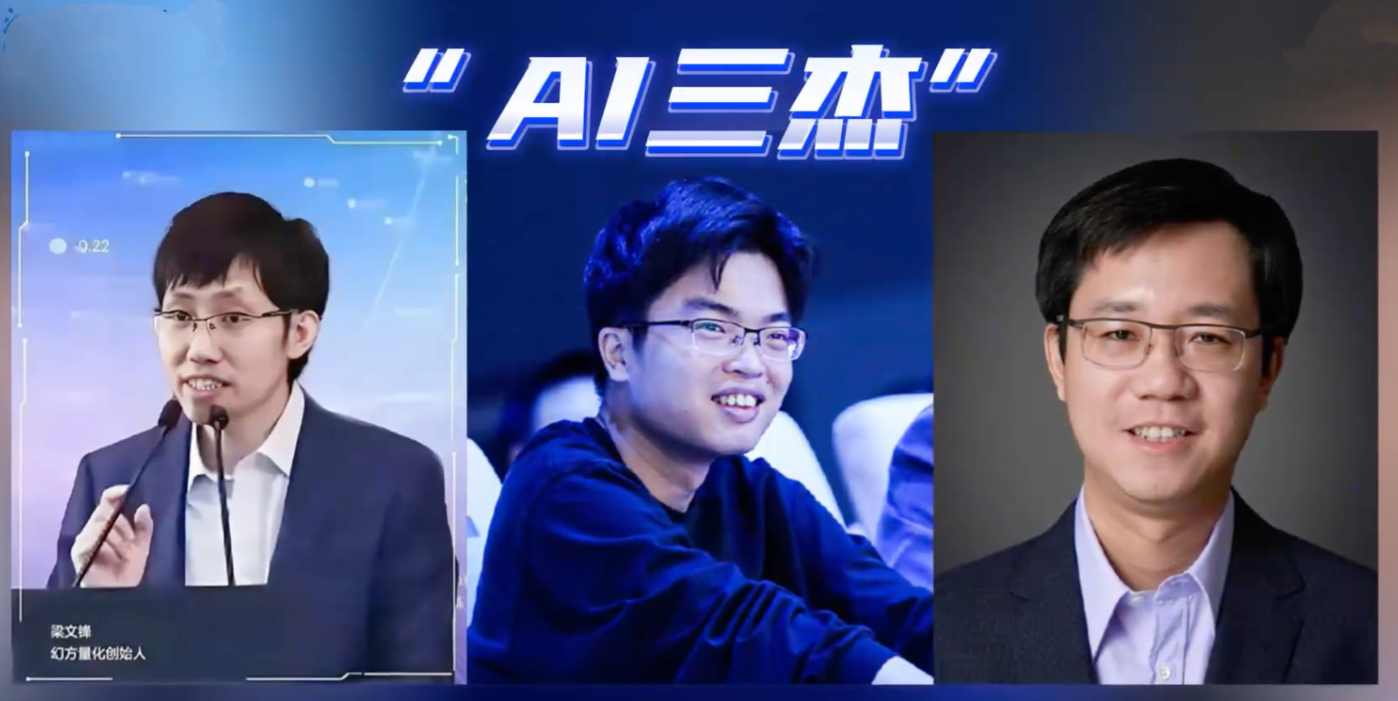
▲ Many Guangdong netizens are asking: Why were the “three AI heroes” born in Guangdong but not developed in Guangdong?
Liang Wenfeng graduated from Zhejiang University, and Yang Zhilin and He Kaiming both studied at Tsinghua University.
Here comes the question: Why do many of the well-known AI gods come from Tsinghua University and Zhejiang University? How did the concentrated distribution pattern of Beiqinghua and Nanzhe University, the alma mater of the founders of China AI companies, form? Will the end of China’s AI competition be the Tsinghua Department versus the Zhejiang University Department?
01
As early as September 2019, New Fortune magazine raised a question: Who is the best AI entrepreneurship class in China?
This problem is still true today. It can be seen that Tsinghua University and Zhejiang University alumni have performed very well in this wave of AI.
In 2024, domestic AI startups will basically form a 6 (Dark Side of the Moon, Intelligent AI, MiniMax, Baichuan Intelligence, Step Stars and Everything One)+2 (DeepSeek, Wall Intelligence) head pattern after going through hundreds of models.
Among them, Yang Zhilin of the Dark Side of the Moon, Zhang Peng of Intelligent AI, and Wang Xiaochuan of Baichuan Intelligent all graduated from Tsinghua University. Liu Zhiyuan, the founder of Yingshi Intelligent, is an associate professor at Tsinghua University. In addition, Yin Qi, CEO of Obvious Technology, one of the original four AI dragons, is from Yao Ban of Tsinghua University. Jia Yangqing, founder of Lepton AI and former vice president of Alibaba, is a graduate of Tsinghua University. Wang Huiwen, the founder of Guangnian who was acquired by Meituan, and Wang Xing behind him is also an alumnus of Tsinghua University. It is not an exaggeration to say that Tsinghua University accounts for half of the top AI startups.

▲ The “Tsinghua Department” accounts for half of the top AI startups.
Since the beginning of this year, DeepSeek has become a popular spicy chicken in the AI circle, bringing popularity to the concept of Hangzhou’s Six Little Dragons.
Most of these six little dragons are closely related to Zhejiang University. Liang Wenfeng’s graduate student is from Zhejiang University, Huang Xiaohuang and Chen Hang of Group Nuclear Technology are both from Zhejiang University Zhu Institute. Zhu Qiuguo and Li Chao, founders of Yunshenshen Technology, both graduated from Zhejiang University. Zhu Qiuguo later became an associate professor at Zhejiang University. According to Zhejiang Daily, half of Yunshenshen Technology employees are alumni of Zhejiang University.
In addition, Zhu Mingming, founder of Lingbian Technology, Zhang Zhengyu, founder of Lianlian Technology, Li Wei, founder of Fun Chain Technology, Gao Peng, founder of Xiangxiang Technology, and Lin Qunshu, founder of Integer Intelligence, also graduated from Zhejiang University.
Just a few days ago, The Paper News sorted out the distribution map of global generative AI patent data in 2024, showing that the academic institution with the largest number of new generative AI patents came from China. The China Academy of Sciences ranked first with 492 new generative AI patents, followed by Zhejiang University and Tsinghua University.
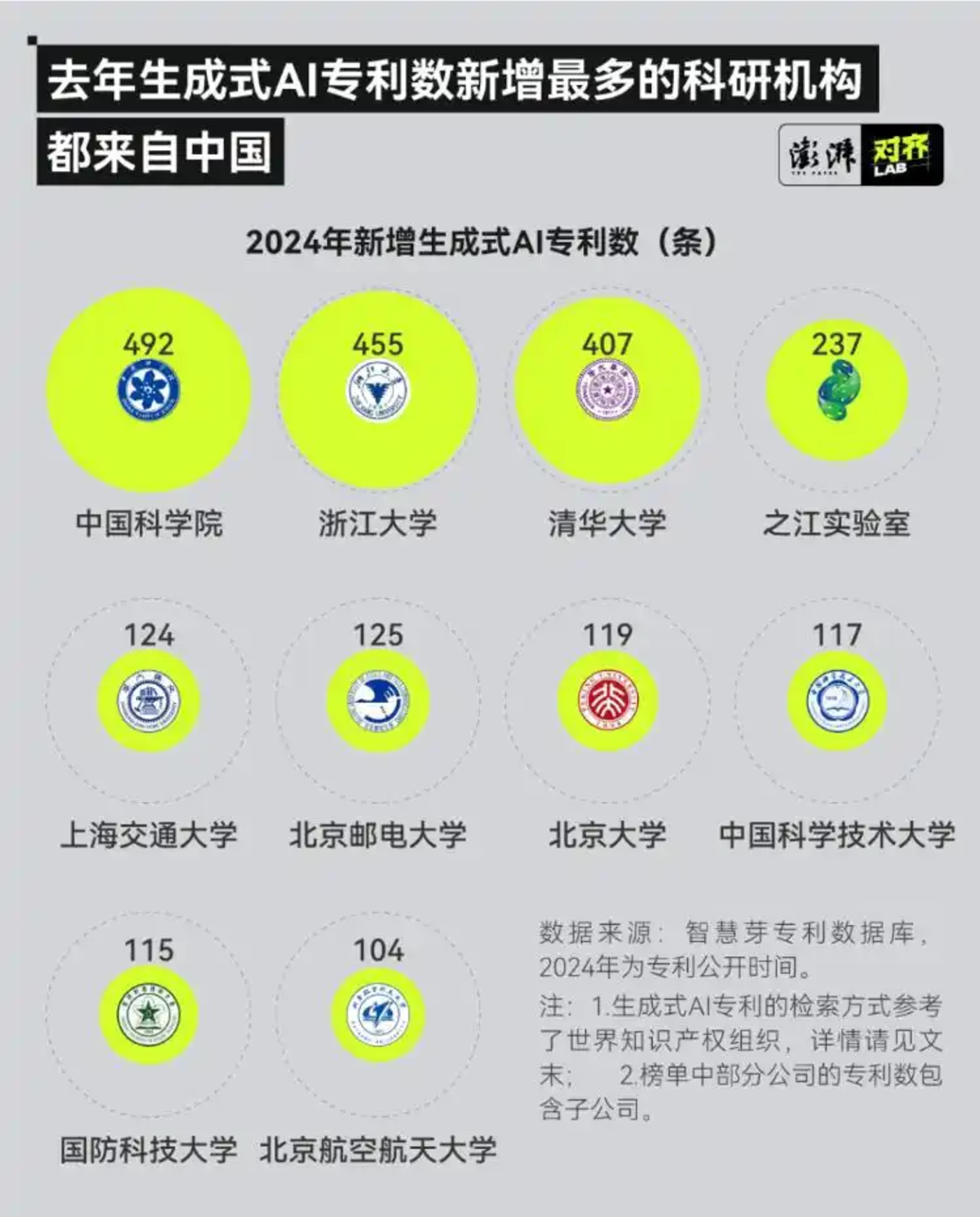
▲ In 2024, Zhejiang University and Tsinghua University rank among the top universities in the number of newly added generative AI patents.
At present, Beijing and Hangzhou are both hot spots for scientific and technological innovation. If you want to comply with the need for labeling and find a university in one north and one south to serve as the Whampoa Military Academy for AI talents, it is not inconsistent to regard Tsinghua University and Zhejiang University as representatives.
02
I have to make it clear that highlighting the subtext of Tsinghua Zhejiang University is not to use a double halberd setting to erase the strength of famous universities such as Peking University, Shanghai Jiaotong University, China University of Science and Technology, Nanjing University, Huake University, Wuhan University and other famous universities in cultivating AI talents, nor is it to exaggerate the theory that AI talents must ask for their origins. Instead, we want to follow the ideas summarized by the investment circle of Tsinghua Department in the AI circle, Zhejiang University Department in the semiconductor circle, Harbin Institute of Technology Department in the robot circle, and Zhongnan Department in the new energy circle to explore the root cause behind the phenomenon.
You don’t have to doubt that almost every famous school can list a number of big-name alumni who have made great achievements in the field of AI, especially Peking University, which is the leader.
The leaders of AI companies who have emerged from Peking University include Robin Li, founder and AI preacher, Li Di, CEO of Xiaobing Company, Wu Minghui, founder of Minglue Technology, etc.; Weng Li, former vice president of OpenAI, who once proposed the formula of Agent= Big Model + Memory + Active Planning + Tool Use, and Luo Fuli, the former backbone of DeepSeek, who was poached by Lei Jun’s ten-million-dollar salary and claimed tobe not a genius girl in the past two days, all have a background in Peking University; Peking University’s Turing class has become a gathering place for top scorers in the national college entrance examination.
Judging from the rankings, in the Nature Index Supplements 2024 Top 100 Global University AI Subject Strength List published by the well-known scientific journal Nature, 19 universities in China are on the list, and the top ten are:
Tsinghua University, Peking University, University of China Academy of Sciences, Zhejiang University, Fudan University, Nanjing University, China University of Science and Technology, Shanghai Jiao Tong University, Sun Yat-sen University, Huazhong University of Science and Technology.
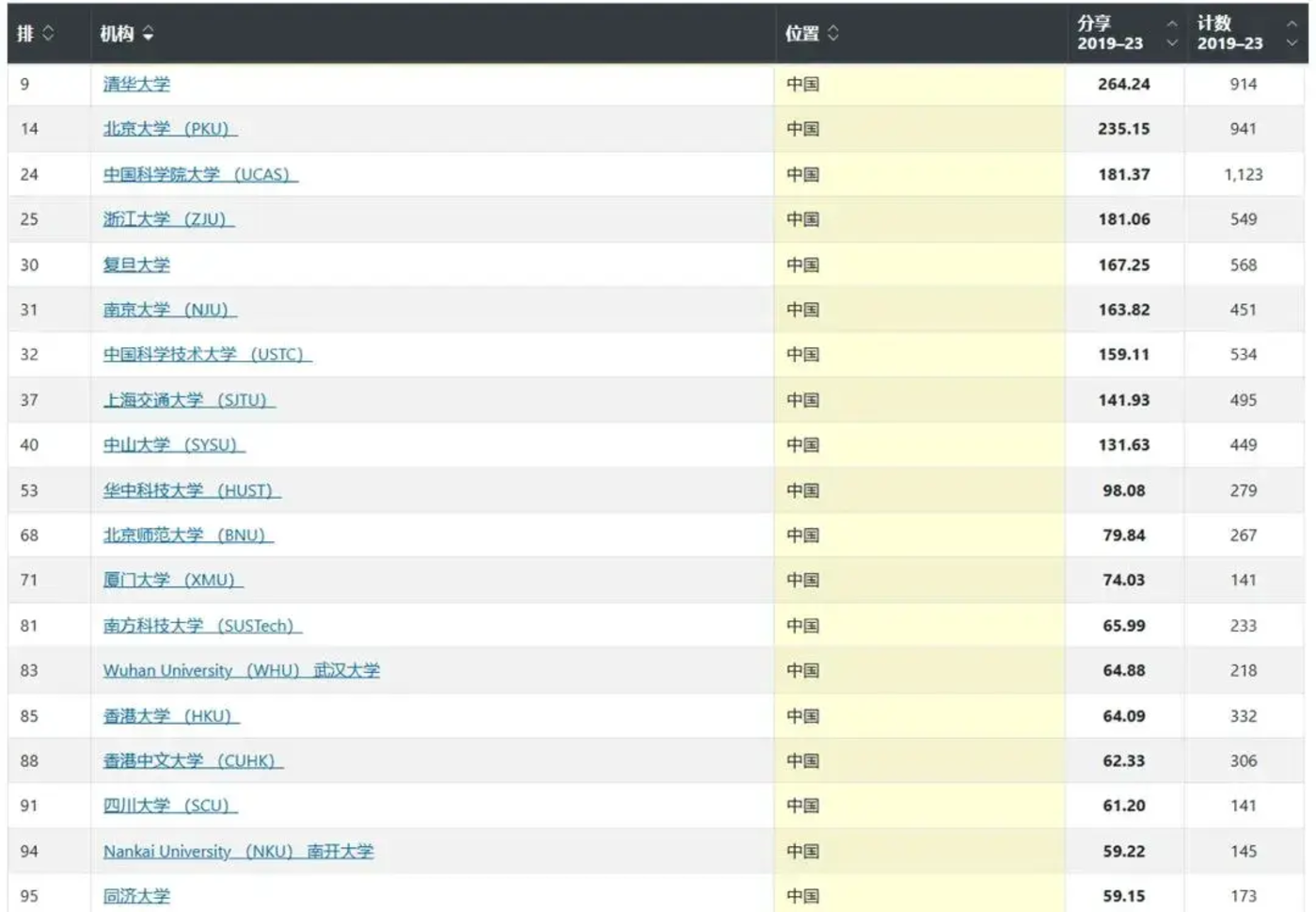
▲ The ranking of China universities in the list of the top 100 AI disciplines in global universities released by Nature.
The 2024 AI professional college rankings of soft science show that the top ten universities in China rated as A+ are:
Tsinghua University, Shanghai Jiaotong University, Nanjing University, Xi’an University of Electronic Science and Technology, Zhejiang University, University of Science and Technology of China, University of Electronic Science and Technology, Huazhong University of Science and Technology, Southeast University, Harbin Institute of Technology.
In the 2024-2025 global AI professional ranking released by US News, 27 of the top 50 universities in mainland China are listed. The top ten are:
Tsinghua University, University of Electronic Science and Technology, Peking University, Zhejiang University, University of Science and Technology of China, Huazhong University of Science and Technology, Northwestern Polytechnical University, University of China Academy of Sciences, Harbin Institute of Technology, Wuhan University.
If only two or three universities in China are stronger than AI, it will be difficult for AI talents to form a rainforest ecology. The stronger is the overall.
But no matter which list it is, it is a fact that Tsinghua University and Zhejiang University are relatively high.
From the dark side of the moon to the successive popularity of DeepSeek, this fact has formed a potential echo.
03
Why have the Tsinghua Department and the Zhejiang University Department become the eye-catching existences in this round of AI wrestling?
Let me try to answer in DeepSeek’s tone:
When AlphaGo detonated the global AI boom in 2016, China’s AI entrepreneurship track was still in a chaotic period. In just ten years, Tsinghua University and Zhejiang University have taken completely different paths to build a full-chain ecosystem covering the implementation of basic research technology transformation industries, becoming a veritable AI Whampoa Military Academy. Behind this is the collision between academic elitism and business agility.
1. Discipline accumulation: The underlying password for cultivating people over a century
Tsinghua Model: Relying on top laboratories such as Yao Banzhi Ban, we focus on breakthroughs in underlying technologies of General Artificial Intelligence (AGI). The Department of Computer Science, the Department of Automation, and the Institute of Cross-Information have formed a three-pronged confrontation, and have achieved remarkable results in fields such as large language models, enhanced learning, and chip architecture.
Zhejiang University model: With Zhu Kezhen’s experimental class as the core, it emphasizes interdisciplinary + scene-driven. The School of Computer Science, in conjunction with the School of Medicine and the School of Management, promotes the rapid implementation of AI in vertical fields such as medical imaging and financial technology.
2. Geographical advantages: Beijing VS Hangzhou’s industrial gene
Beijing Gene: Internet giants in Zhongguancun (such as Baidu and Byte) provide Tsinghua graduates with closed-loop technology-product practical scenarios.
Hangzhou Gene: As the capital of the digital economy, Zhejiang University’s deep binding with Alibaba and Ant Group has given rise to a thinking paradigm that technology is business.
……
OK, the above was indeed told to me by DeepSeek Inside’s Mixed Origin, not what I drew it up in a quasi-AI tone. It saves me a lot of effort to explain.
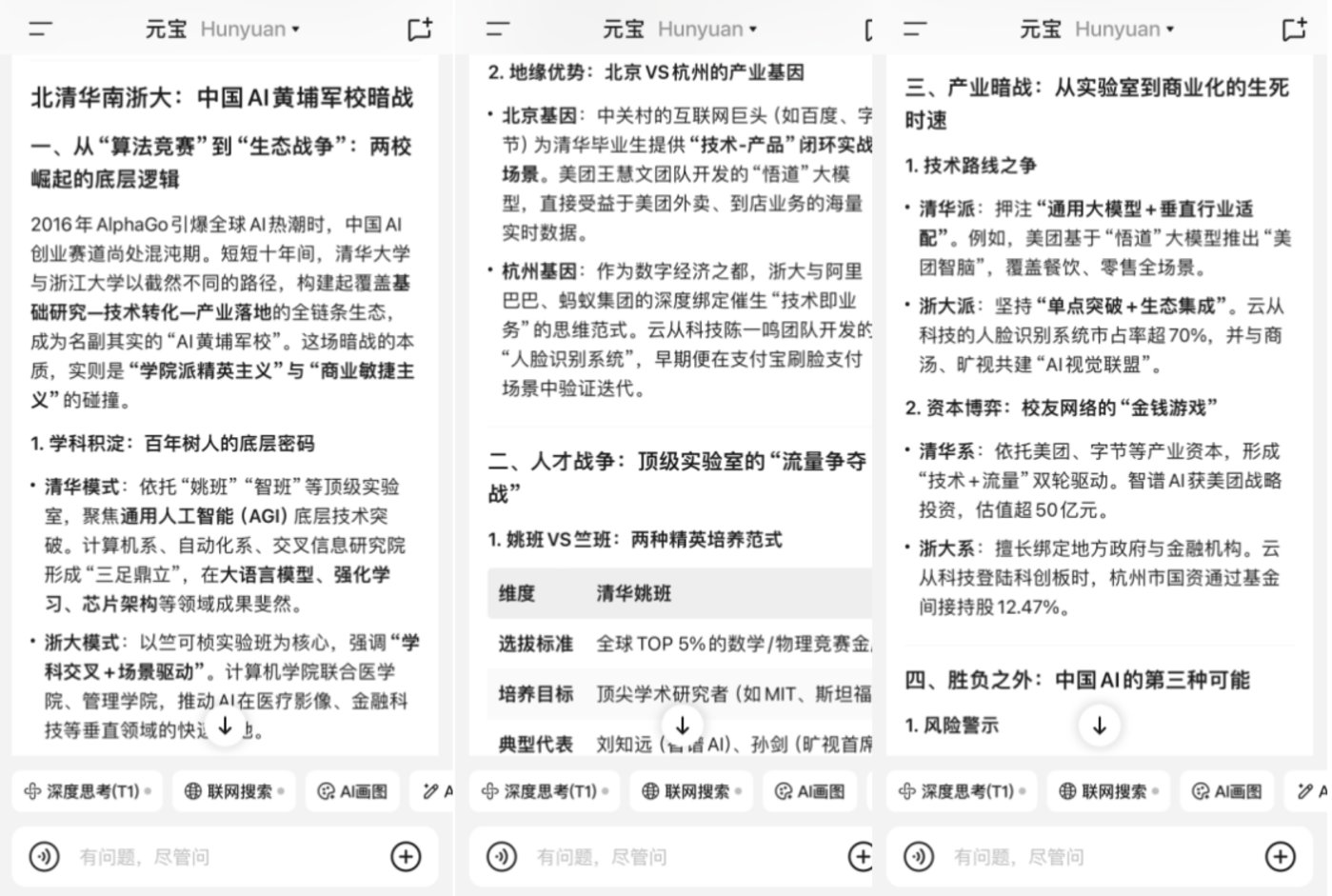
▲ The answer given by Tencent Yuanbao.
However, this is still a bit general.
04
Then let me say something emotional.
A professor at Carnegie Mellon University (CMU), known as the No. 1 school of artificial intelligence, once said: Every time he receives an application from a student in Yao Class of Tsinghua University, he puts it together first. As long as his English proficiency meets the standard, he will admit everyone who can be admitted first, and then go to see others.
Just like Tsinghua EE85, which cultivated semiconductor Tianqun, Tsinghua Yaoban has been famous for many years.
Tsinghua students are selected for the college entrance examination, while students in Class Yao are selected for strict selection by Tsinghua. Therefore, talents from half of the country gathered in Tsinghua University, and half of Tsinghua University talked about it in Yao Ban.
The students who can enter the Yao Class are basically the best among the best. Domestic and international Olympic gold medals are almost standard, and the number of top picks is extremely high.
While many college students are still immersed in Dota in their sophomore year and junior year, they may have joined the national project of research on new generation AI chips.
In the 20 years since its establishment, Yao Ban has produced many god-level figures.
Yin Qi, Tang Wenbin, and Yang Mu, the three swordsmen of Magnificence Technology, Lou Tiancheng, co-founder and CTO of Xiao Ma Zhixing, who was once known as the first computer programming person for college students in China, and Zou Hao, a financial genius who returned to China to start a business, are all representatives of entrepreneurship.
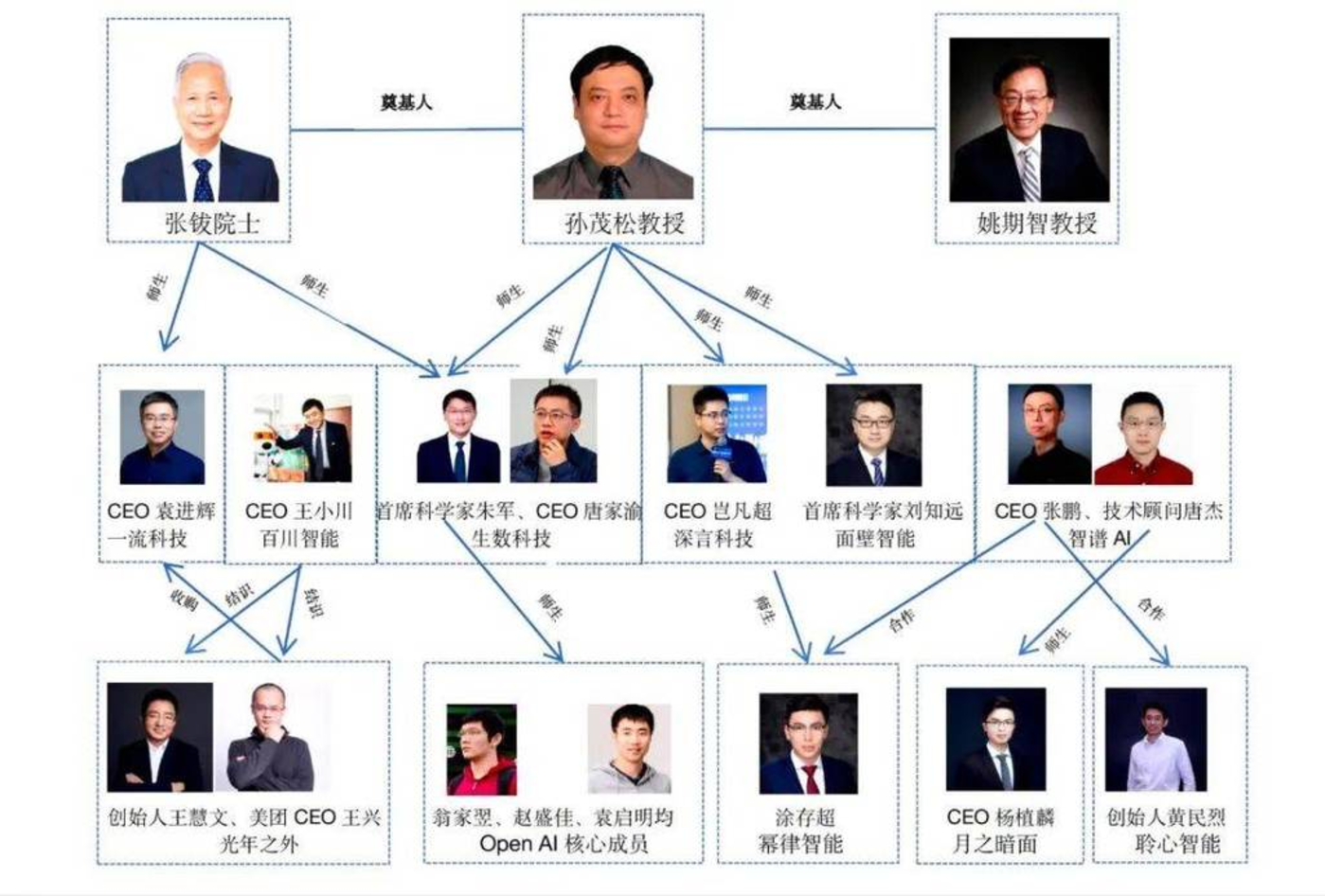
▲ The leaders of Tsinghua AI startups all have some connections with the founders of China artificial intelligence such as Zhang Bo and Yao Qizhi.
Zhuyuan of Zhejiang University is also a place where scholars and gods gather.
Huang Zheng, the founder of Pinduo, is from Zhu Academy. Also from the Zhu Institute are Liu Ruopeng, Chairman of Guangqi Science, Fang Yi, Chairman of Daily Interactive, and others who are known as leading figures in metamaterials.
However, just mentioning Yao Ban and Zhu Yuan is ultimately a bit weak.
In my opinion, there are two points that cannot be ignored.
The first is the inter-embedding of universities and cities.
Beijing’s ultra-high talent density and Hangzhou’s business-friendly characteristics have supported the unique integrated ecology of industry and education in the two places.
Beijing’s former Zhongguancun and current Houchang Village are backed by the scientific and educational talent resources brought by Qingbei. Big technology Internet factories often integrate innovation incubators and experimental fields, and also bring those innovation fires to a prairie fire.
Beijing’s big Internet factories need Qingbei, and Qingbei students also need these big factories.
Zhejiang University has been the university with the highest entrepreneurship rate among graduates in China for many years, which has something to do with Hangzhou’s business-friendly soil.
Hangzhou’s business-oriented atmosphere, inclusive environment, and Internet temperament are naturally suitable for the seeds of innovation and entrepreneurship to sprout.
In the words of Niu Wenwen, chairman of Entrepreneurship Black Horse, what DeepSeek needs is not support, but the magic square not to be killed. Hangzhou’s insistence on disturbing private enterprises and setting up firewalls for offshore fishing are essentially on the other side of killing magic squares, cultivating a climate that breeds more DeepSeek.
The second is mutual help among alumni circles.
“New Fortune” said that behind the phenomenon of technological benefits for graduates of Yao Ban and Zhu Colleges is the clustering effect of smart people.
The clustering effect can be reflected in the close connection network of alumni.
Wang Xing, Wang Xiaochuan, Yang Zhilin, and Zhang Peng are estimated to be unable to isolate these people even if they subtract six degrees from five degrees in the six-degree separation theory.
Industrial capital such as Meituan and Byte supports entrepreneurs who graduated from Tsinghua University, and it is not uncommon for financial capital from Zhejiang University to invest large amounts of money in Zhejiang University alumni enterprises.
Of course, whether many people can become AI bosses has a big relationship with whether they graduated from a prestigious school. Otherwise, Wang Xingxing would have nothing to do with the embodied robot industry.
Whether it is student intelligence factors, college teaching factors, city factors, or alumni factors, they are not the single decisive factor for Tsinghua Zhejiang University to be rich in AI giants.
But these are all causes in one effect. In terms of probability, today, when technology and knowledge create wealth are in the ascendant, and when AI entrepreneurship places high requirements on resource acquisition capabilities, people who have mastered multiple conditions are often close to the water and get the first to get things done.
05
At present, many AI entrepreneurs from the Tsinghua Department and Zhejiang University Department are fighting head-to-head in the AI field.
In the past two days, Liang Wenfeng and Yang Zhilin have collided with each other. The former published a paper focusing on Native Sparse Attention (NSA), while the latter proposed a new method of Block Attention Mixing (MoBA). Both of them directly point to algorithm optimization, causing heated discussions in the industry.
Earlier, on or around January 21, DeepSeek released new models comparable to OpenAI o1 almost simultaneously with the dark side of the moon (only 2 hours apart), namely DeepSeek-R1 and Kimi k1.5. OpenAI’s own paper mentioned that the two China companies that discovered the mystery of O1 are DeepSeek and Dark Side of the Moon. Under the long-CoT model, Kimi k1.5 is the only model in the world that achieves O1-level multimodal reasoning performance outside OpenAI.
Next, this continued confrontation between the AI duo is inevitable, which has also become a projection of high-intensity AI competition. However, because the Qing and Zhejiang brands of AI Jianghu are too eye-catching, they are inevitably regarded as a competition between the two factions.
But it is not so much that the end of China’s AI competition is the Tsinghua Department VS the Zhejiang University Department, which narrows multiple competition and competition into binary opposition. It is better to say that the major AI higher education towns including Tsinghua Zhejiang University have jointly supported China’s AI talent reserve.
The core resources in the AI era are not data, computing power, or algorithms, but talents. Liang Wenfeng said: Talent competition is the essence of scientific and technological competition.
Data from the global artificial intelligence talent tracking survey released by the McRobpolo think tank in the United States last year shows that China and the United States are the main sources and target places of work for top AI talents. 65% of top AI talents come from China and the United States., 70% of top AI talents work in institutions in both countries. In the competition between the two countries, the United States has a clear lead: it has 60% of the world’s top AI research institutions and is the preferred employment destination for the top 2% of the world’s AI talents.
It is worth noting that China has surpassed the United States to become the largest producer of AI talents, cultivating almost half of the world’s top AI researchers, accounting for an increase from 29% in 2019 to 45.63% in 2024. Among the top AI research institutions in the United States, 3/4 of the top AI talents come from the United States and China, with the proportion of China (38%) higher than that of the United States (37%). About 20% of the researchers on the GPT-4 team’s core contributor list are from China.
Obviously, under the background that AI has become the forefront of the scientific and technological game of major countries, China needs to find ways to retain more AI talents produced by China on the basis of being good at cultivating, not to exclude international exchanges and cooperation of AI talents, but to enhance its attractiveness so that AI talents can stay and stay.
From this perspective, in China’s AI competition, of course, requires the Tsinghua Department VS the Zhejiang University Department, and more importantly, the Tsinghua Department + the Zhejiang University Department.



